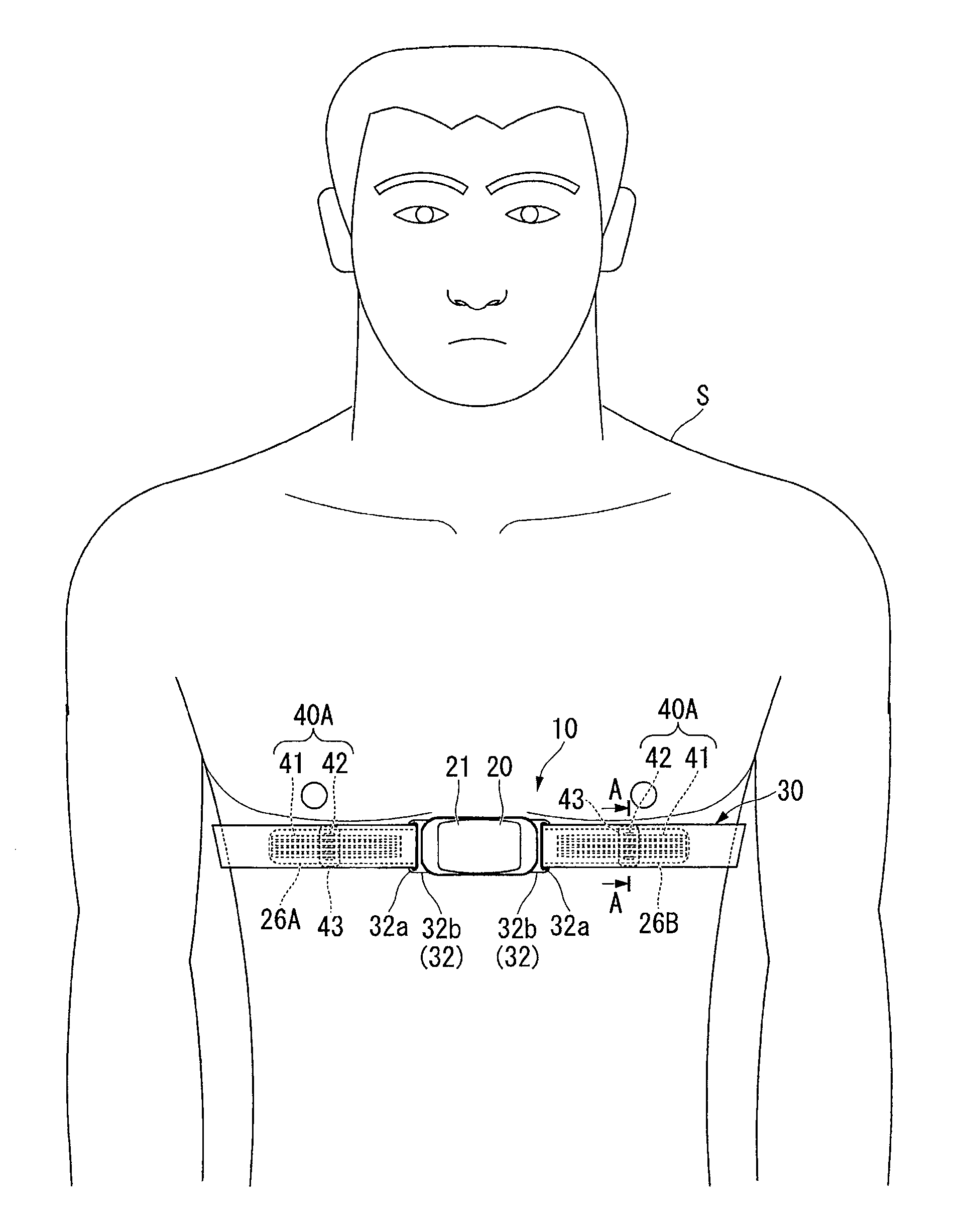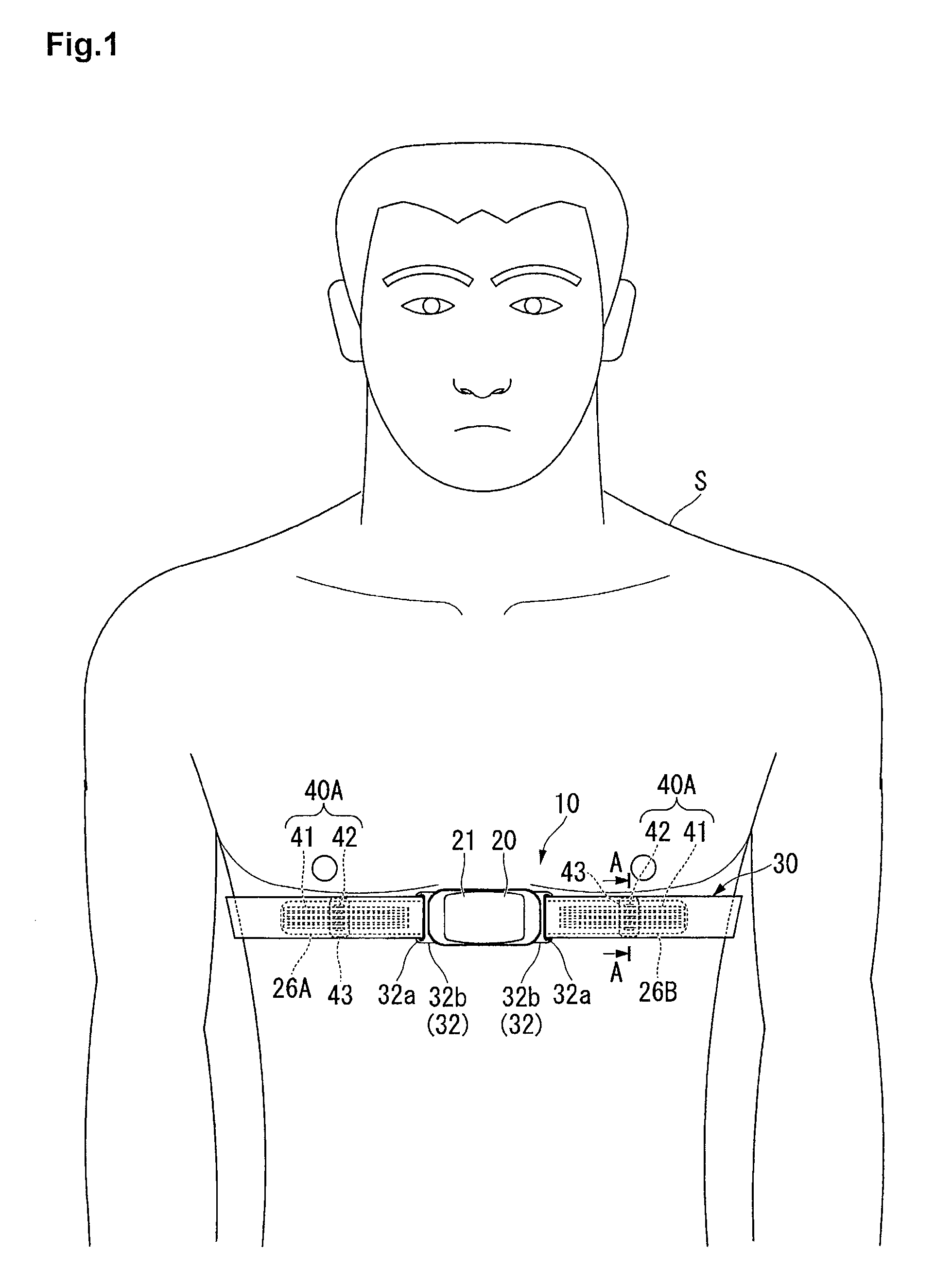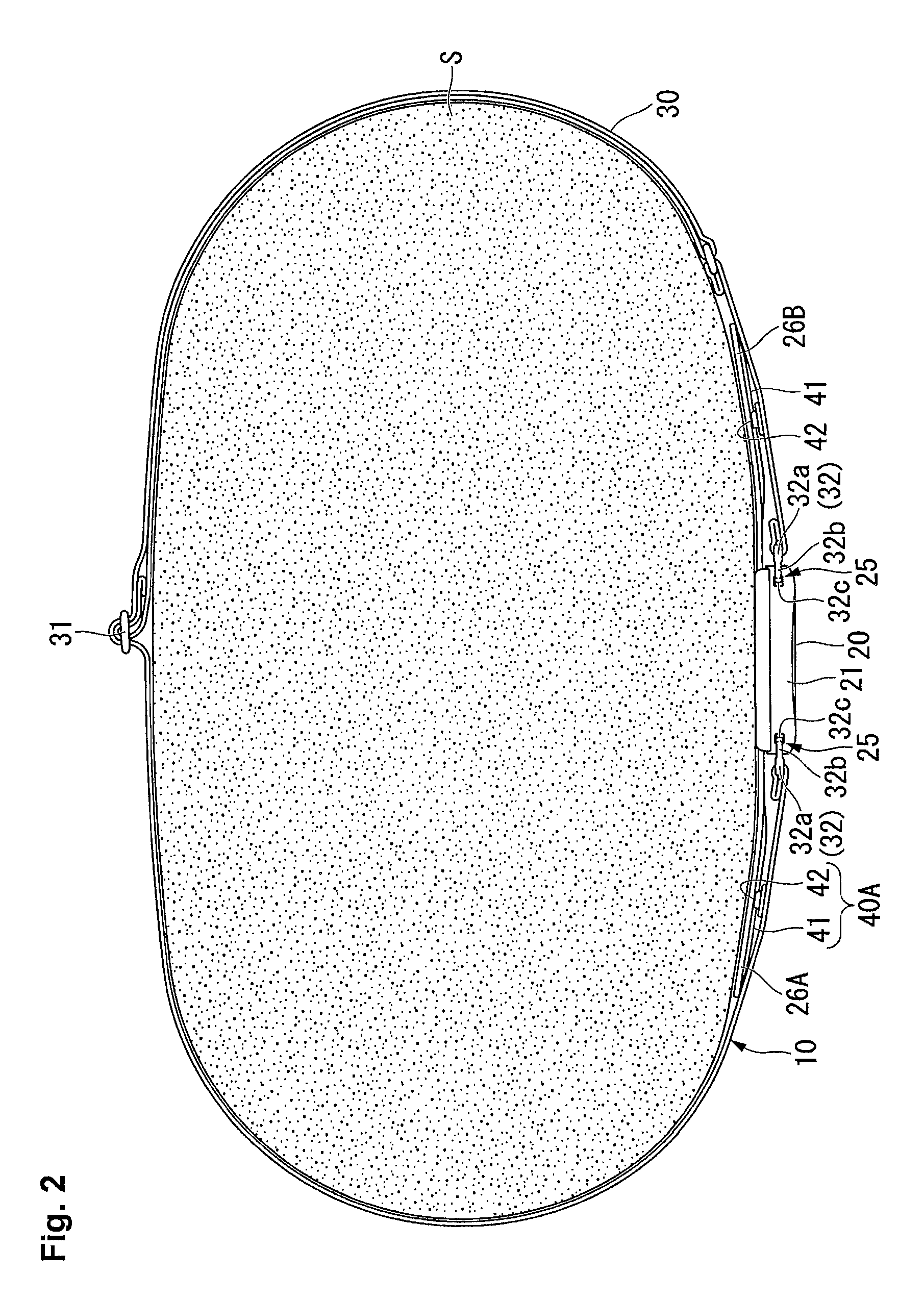Biological information detecting device
a biochemical information and detection device technology, applied in the field of biochemical information detection devices, can solve the problems of reducing the force of the electrode portions onto the biological surface, hindering the detection of an electrocardiographic signal, and difficulty in obtaining sufficient holding force with respect to the electrode portions, etc., to achieve stab detection, reduce cost, and simplify the structure
- Summary
- Abstract
- Description
- Claims
- Application Information
AI Technical Summary
Benefits of technology
Problems solved by technology
Method used
Image
Examples
first embodiment
[0034]Next, a first embodiment of the present invention will be explained with reference to the drawings.
[0035]FIG. 1 is a front view showing a state where a heart rate measuring device 10 as a biological information detecting device according to the first embodiment of the present invention is attached to a wearer S.
[0036]As shown in FIG. 1, the heart rate measuring device (biological information detecting device) 10 detects an electrocardiographic signal generated by heartbeats by being attached to a chest as a biological surface of the wearer S and transmits the detected electrocardiographic signal by wireless communication.
[0037]FIG. 2 is a transverse sectional view showing a state where the heart rate measuring device 10 is attached to the wearer S. FIG. 3 is an enlarged view of a relevant part of FIG. 2. FIG. 4 is an exploded perspective view showing the heart rate measuring device 10.
[0038]As shown in FIG. 1 to FIG. 4, the heart rate measuring device 10 includes a device body...
modification example of first embodiment
[0072]Next, a modification example of the above first embodiment will be shown. In the first embodiment, the case where the convex portions 42 in the fixing band 30 side have the rail shape extending along the extending direction has been explained, however, the present invention is not limited to this. For example, convex portions (engaged portions) 44 may have a cylindrical shape extending toward the electrode portions 26A / 26B side (the normal line direction of the surface 30f of the fixing band 30) as a guide portion 40B shown in FIG. 7.
[0073]According to the structure, the same operation and effect as the first embodiment can be obtained as well as the contact area between the protruding ridges 41 and the convex portions 44 along the extending direction can be reduced to be smaller than the rail-shaped convex portions 42 as in the first embodiment at the time of fitting the protruding ridges 41 to the convex portions 44. Accordingly, the fitting force between the protruding ridg...
second embodiment
[0081]Next, a second embodiment of the heart rate measuring device 10 according to the present invention will be explained. In the following explanation, the same components as the first embodiment are denoted by the same numerals and signs and explanation thereof is omitted. FIG. 10 is a view showing a structure of a guide portion 40E according to a second embodiment of the present invention. The present embodiment differs from the first embodiment in a point that edge portions in the width direction of each of the electrode portions (the other member) 26A and 26B are used as the guide portion 40E as shown in FIG. 10.
[0082]Specifically, the guide portion 40E according to the embodiment includes a pair of convex portions (engaging portions) 52 in the fixing band (fixing member, one member) 30, which protrude toward the electrode portions 26A / 26B. These convex portions 52 have a rail shape continuously extending along the extending direction. A width W1 between respective convex port...
PUM
 Login to View More
Login to View More Abstract
Description
Claims
Application Information
 Login to View More
Login to View More - R&D
- Intellectual Property
- Life Sciences
- Materials
- Tech Scout
- Unparalleled Data Quality
- Higher Quality Content
- 60% Fewer Hallucinations
Browse by: Latest US Patents, China's latest patents, Technical Efficacy Thesaurus, Application Domain, Technology Topic, Popular Technical Reports.
© 2025 PatSnap. All rights reserved.Legal|Privacy policy|Modern Slavery Act Transparency Statement|Sitemap|About US| Contact US: help@patsnap.com



